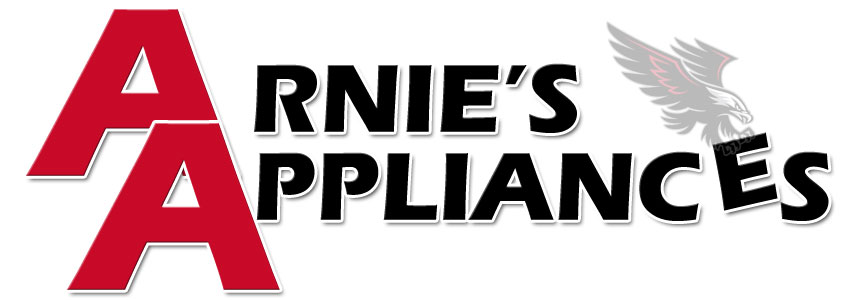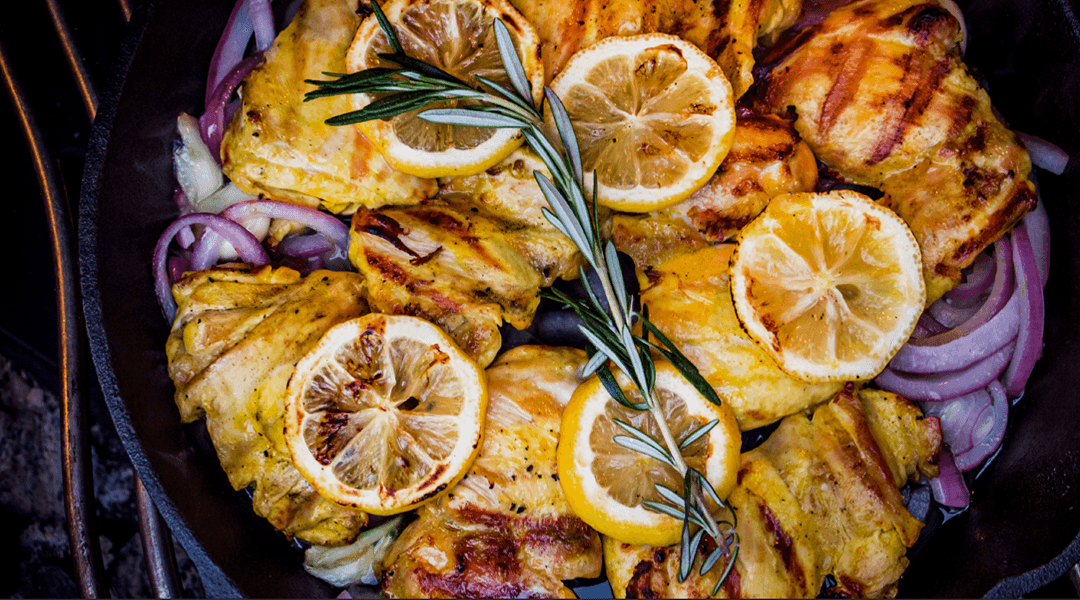From our friends at Napoleon!
Napoleon understands the importance of quality cast iron. It’s the ideal material for use in cooking. It is long-lasting, durable, and keeps coming back for more. Not only do we have amazing cooking grids and griddles made from cast iron, but we also launched a plethora of cast iron accessories and they’re ideal for everything from baking to stews, cooking over the coals, or on gas, and even on the stove or in the oven indoors. But, do you know how to care for your cast iron accessories to ensure that they last a lifetime? Find out more about one of the greatest materials to ever find its way into cooking.
Check out our Lebanese-Style Lemon Chicken recipe, cooked in a cast-iron frying pan, as seen in our feature image.
HOW TO CARE FOR CAST IRON
Let us get right to the meat and potatoes of this article. How to care for cast iron. Some people think that cast iron is a challenge to maintain. No, it just takes time and patience. Cast iron cookware and cooking grids are tough as heck. It’s pretty hard to damage once you have a good finish on it. But, how do you clean cast iron and season it?
HOW TO CLEAN CAST IRON COOKWARE AND COOKING GRIDS
There are two ways to safely clean your cast iron. One is with soap and water and the other is with salt. Now. I can hear the outcry and threats. Please, don’t throw your cast iron pans at me… or your computer monitor as you read this. A properly maintained and well-seasoned cast-iron item will have a very tough finish. Something that cannot be destroyed by a little bit of soapy water. When you season your cast with a high-smoke point oil, the heat causes that oil to polymerize into something that a little soapy water isn’t going to do much harm to at all. You would seriously have to go at your pan with steel wool on a high-powered drill after overheating a dry pan for hours to strip a well-maintained finish. So, how do you clean your cast iron?
- Take your hot pan/griddle/dutch oven to the sink using heat resistant gloves.
- Rinse with hot water.
- Use a sponge or nylon dish brush and mild dish soap to clean the pan of dinner residue.
- Dry immediately by placing the cast iron into a still warm oven or dry with towel/paper towel.
- Season your pan (see how to season below).
**This is particularly useful for cast iron items that are not the typical “frying pan” shaped like griddles and cooking grids.
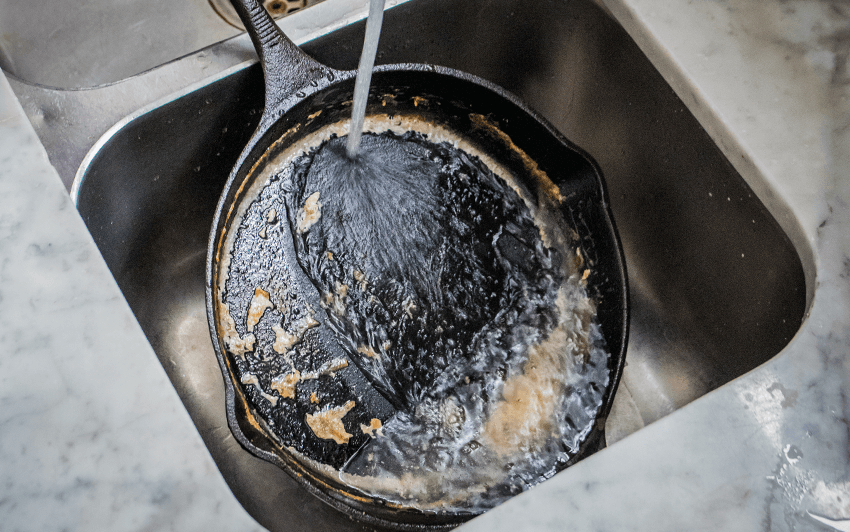
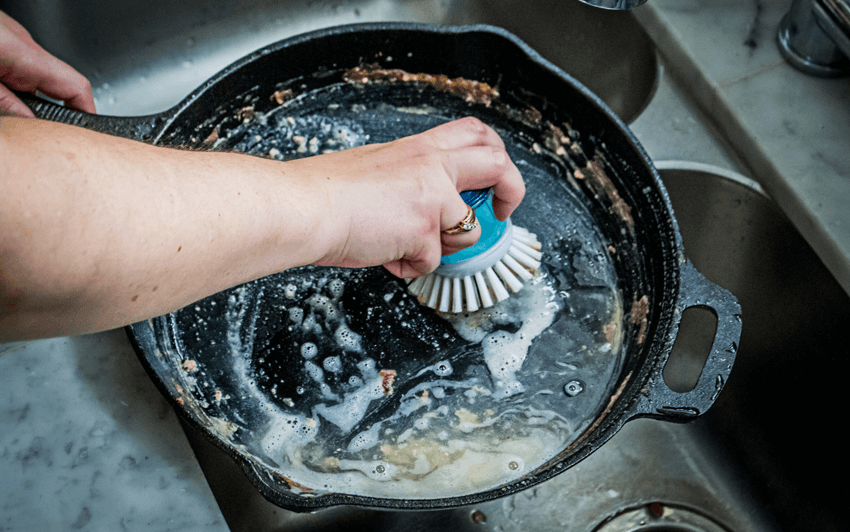
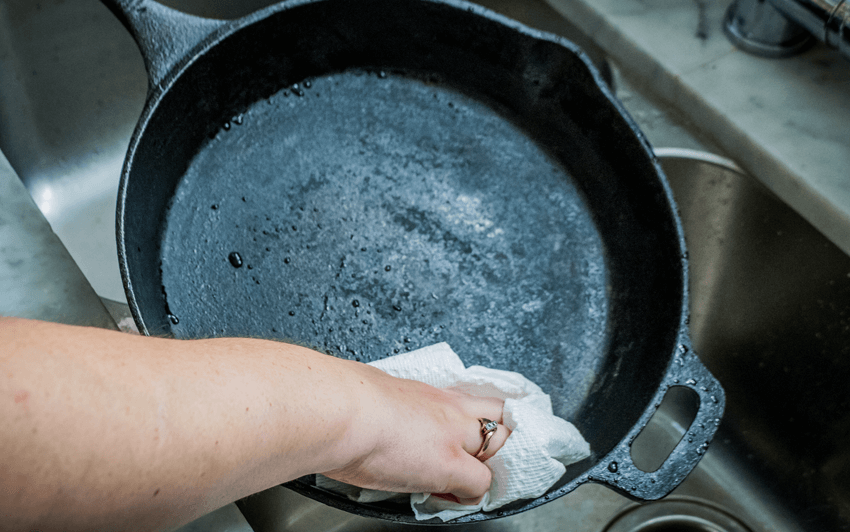
Things to remember if going the soapy water route:
-
Never soak the pan or dunk it in the dish water.
-
Never use the dishwasher.
-
Don’t use the abrasive side of the sponge while cleaning, use a scraper or nylon brush.
-
Never let your pan stay wet, always dry immediately.
WHY YOU SHOULD CLEAN CAST IRON WHEN IT’S HOT
Much like when you clean your barbecue while it’s still hot, cleaning hot cast iron cookware, cooking grids, griddles, and such will make it easier to remove any foods that are stuck on. The heat also helps to prevent any food that potentially sticks on from hardening and sticking. You can still clean cast iron when it is cold, however, you will have a harder time getting the food you last cooked, off.
For those of you who feel faint at the thought of using soap anywhere near your cast iron cookware, try using salt to clean it.
- Using heat resistant gloves, bring the cast iron to the sink.
- Rinse any greasy residue out or off of the surface with hot water.
- Sprinkle with coarse salt (kosher works) and using a clean sponge or cloth and a little hot water, rub the coarse salt into the places where the gunk is.
- Rinse with hot water and dry immediately.
- If there is extra stuck on stuff, a nylon brush or plastic scraper will help.
- Season your pan (see instructions below).


STUBBORN STUCK ON FOOD?
If you have some particularly stubborn stuff stuck on, place the cast iron over high heat like on a cooking element or on the barbecue and pour the coarse salt over the spots. The heat and salt will help completely carbonize the undesired spots. Brush the carbonized stuff away with a paper towel or a soft cloth and then rinse, dry and season thoroughly.
HOW TO SEASON CAST IRON COOKWARE AND COOKING GRIDS
Follow these instructions for re-seasoning cookware that has just been cleaned, ensuring quality cooking and longevity for your favorite cast iron cookware. (And your cast iron cooking grids).
- Once your cast iron is clean and dry, rub the item with ¼ to ½ tsp. of a neutral oil that has a high smoke point. This includes canola oil, corn oil, shortening, and refined coconut oil.
Refined coconut oil will be labeled as such, avoid virgin and cold-pressed coconut oil as their smoke points are only 350°F which is considered low, while refined coconut oil has all of the benefits of virgin/cold-pressed with a higher smoke point of 400°F +
- Remove any residue from the chosen oil so that the cast iron looks matte, not glossy/greasy.
- Heat the cast iron cookware or cooking grids over an oven element (for pans and pots) until they are just smoking and then allow them to cool. If you do the inside and outside or have grids or griddles, place them into a preheated 300°F oven or barbecue until just smoking, about 5 minutes, and then turn off and allow to cool completely.
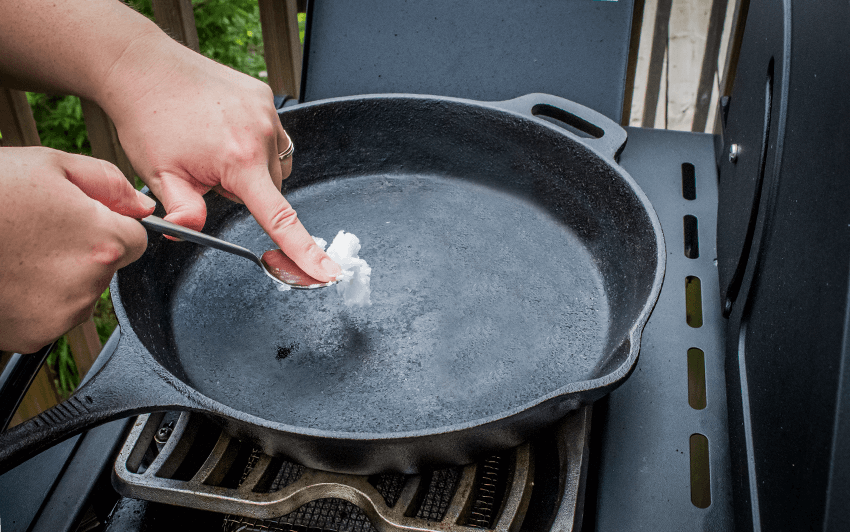

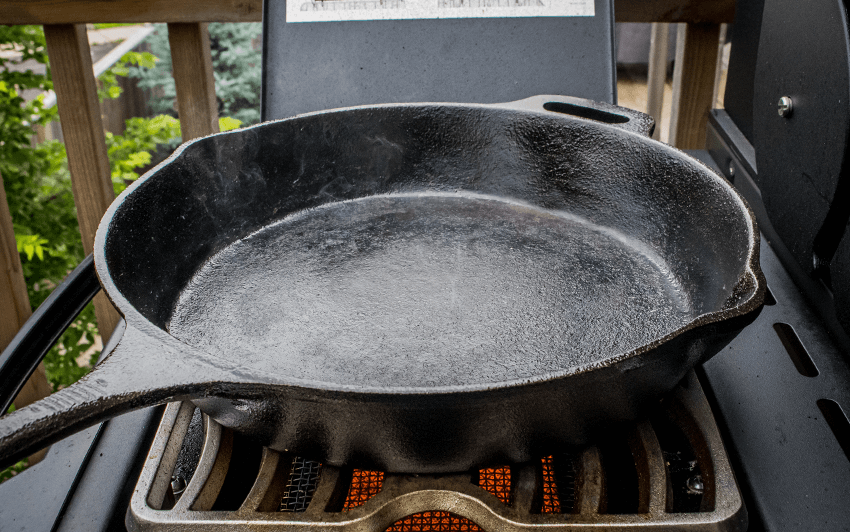
TIPS AND TRICKS FOR THE BEST RE-SEASONING
-
Never just rub the cast iron with oil and put it away. Oil can go rancid or get sticky, like with vegetable oil, and this can affect the flavor of the food you cook next. If something like this has happened, wash the offending oil out with soapy water and completely re-season your cast iron following the steps above.
-
Always season cast iron that says it was pre-seasoned.
-
Rusty cast iron? Don’t despair! Remove rust spots with steel wool, clean and re-season.
-
Always store cast iron in a dry area. As long as you remove the cast before, the oven is an ideal place to store your cast iron cookware.
Do you love your cast iron cookware and cooking grids? Tell us about your favorite experience with cast iron, share your favorite cast iron recipes, and tell us your favorite cast iron stories by commenting on this blog or reaching out on social media like our Facebook and Instagram pages. Use the hashtags #NapoleonGrills and #napoleonEats.
